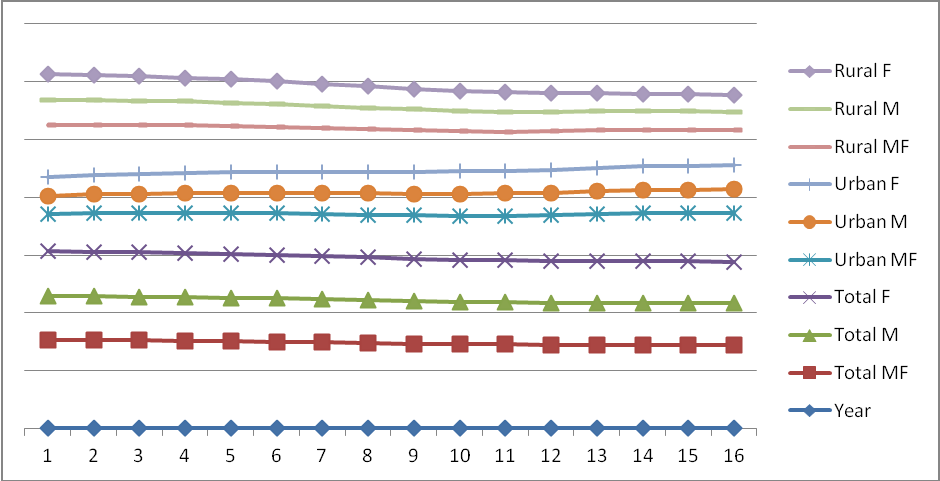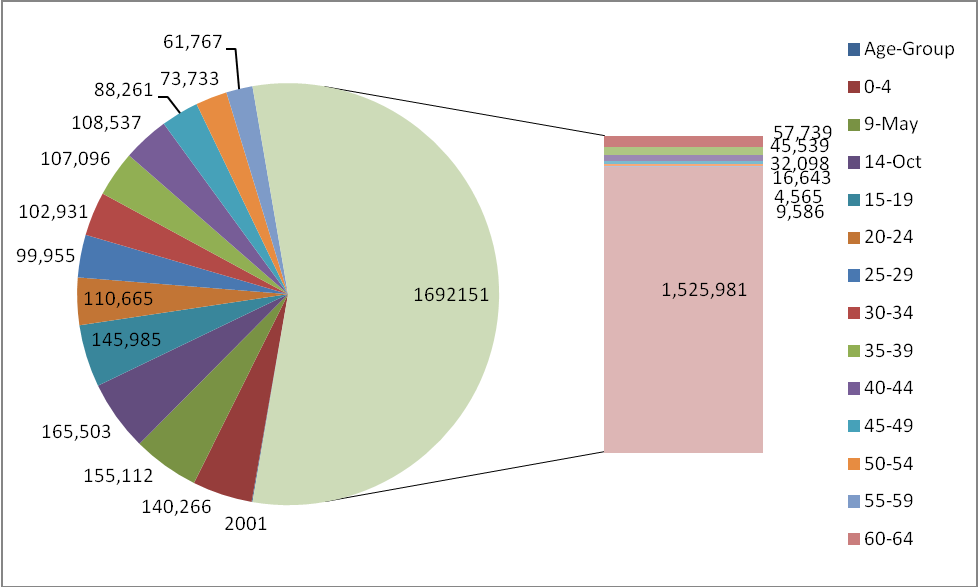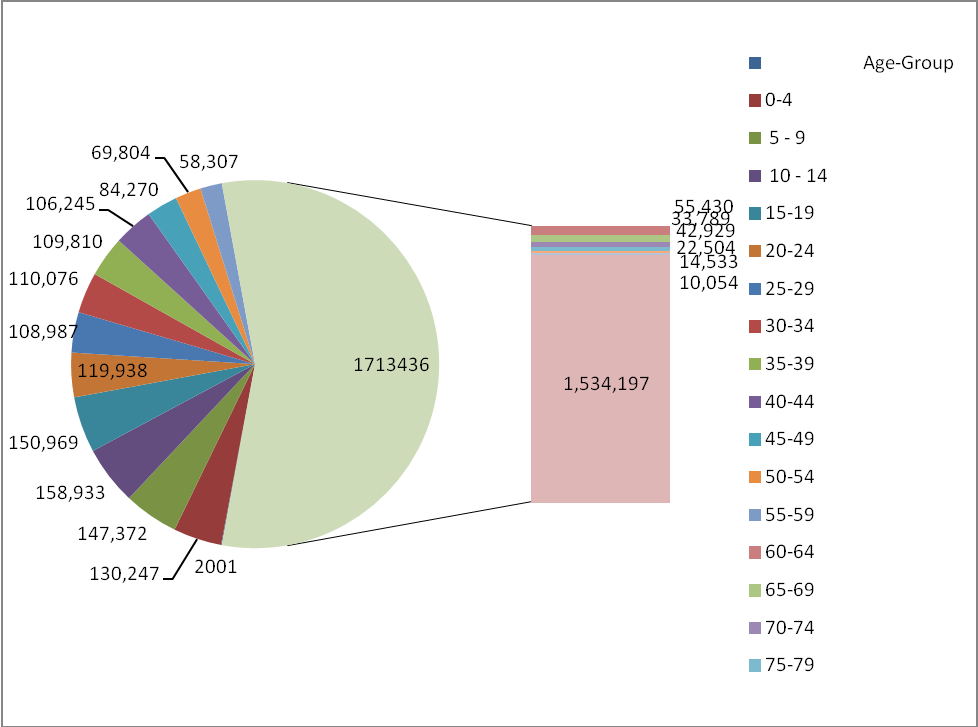Abstract
This paper presents the reasons Albanian’s human resources have migrated and the consequences that this migration has brought to the Albanian people. We have also tried to give the differences between the past and the present, as well as our opinion about what we think, as a new generation, is going to happen next with the migration issue. Migration is one of the most discussed issues of the moment as we are all part of the global change, we are conscious that migration has its pros and cons. The focus of this paper is the research of migration, emigration and the impact that this migration has brought in Albania. All the dates provided in this paper make a comparison between the past and the present, we may see that the number of people in big towns has always been in grow, as a due to facilities that big towns provide, such as better education, better health care and of course, a better standard of living. In this paper there are include also the debates of intellectuals, politicians, about emigration mostly with our neighbors places, such as Italy, Greece, etc., where Albanians traveled abroad for a better life because of unemployment and poverty. As for Albania, it had an increasing number of the old and there had more women than men. Emigration, now has been considered as a “family based migration”, that means family members join the emigrants abroad after a period of time.
Keywords: Migrationhuman resourceseducationgenderfamilyemigrant
Introduction
Albanians, as human beings have always led to a better lifestyle. Therefore they have chosen
migration as the best possible option. Staying for a long time under the pressure of communism regime
and facing the occupation of foreign states, made Albanians to start their life somewhere far from
Albania. Migration in Albania has its roots since 1990s.
During the last two decades, Albanian’s population has had a drastic change, dropping from
3,182,417 in 1989 to 2,800,138 in 2011 (INSTAT). Making a comparison between the last decade and
the present, we can clearly see that 10 percent of populations have changed their settlements, by
moving from rural areas to urban cities, especially in Tirana and its nearest areas. This has had an
impact on the population’s structure, as well as on vital services such as: education or healthcare.
Referring to other Balkan countries, Albania’s internal migration is synonymous with urbanization
(Migration).
All these changes make us reflect about the reasons that have forced these people to leave their
country or come back again after a period abroad. The main reasons focused on the necessity of a better
education, a better job and what’s more; a better life. The most favorite countries that continue to be
chosen even nowadays are: Italy and Greece. Television has played a main role in their decision to
emigrate especially the Italian one since 1989.
The most massive wave of emigration was in 1991, period in which the regime fell, to continue
massively until 1997. Beside the economic and political reasons, ambition was a strong reason that
pushed people towards a brand new lifestyle. They took a step into the unknown, without having any
information about the host country. Albanians only referred to what they had heard by the previous
experiences of the others and were also based on their own intuit. This movement left a sign, not only
in the protagonists’ lives, but it also opened a new chapter in the “difficulties book” of Albania.
Emigration
Emigration, as a notion, is referred to a movement from inside, to outside the border of your home
country. The biggest number of Albanian emigrants was signed during the period 1991-2001, while
20% of the whole population chose to migrate abroad, especially in Italy and Greece. The main reasons
why they preferred to live in these countries were: geographical proximate, linguistic
acknowledgement, approximate habits, etc. Migration was considered as the most important decision of
these people life’s, as they knew where they wanted to go and what they wanted to achieve, but didn’t
know what was expected in the host foreign countries. Migrants just got into the boat, took a step into
the unknown and left everything depended on luck. Some people were followed by good luck and
managed to get into the other side, while some others were stuck in the middle of nowhere and left
there forever, signing another tragic moment in Albanian’s history. The main parts of them were men
and later on they got together with their family members. But, which are some of the reasons that made
Albanians take this step?
Mainly, poverty and unemployment were the most significant factors, followed by the need for
political and individual safety and poor living conditions (ILO, 1996). Education is also one of the key
pull factors. A lot of students have finished their studies in the best universities abroad, such as: Italy,
EU countries and the United States. Just like two sides of a coin, migration had its pros and cons.
Nobody said it was going to be simple. Actually, they passed from one difficulty to another and even
nowadays they haven’t found the paradise that they had dreamed, or promised.
Albanians were faced with hard works, discrimination, new mentality and new lifestyle. These
people showed patience beside every injustice, as they needed money for themselves and their families
in their home country. So, we may say that they gave more than they gained. On the other hand, some
Albanians managed to rise up Albania’s name and to make us feel proud of them. Everything seemed
fine, until crises attacked countries…
Internal migration
Internal migration has its beginnings since 1990’s, right after the totalitarian regime fell when many
Albanian people wanted to move from rural areas to urban cities. So, how can we paraphrase the term
of internal migration? According to some specialists of this field, it is a phenomenon, where people
move from their usual residence to a permanent or statement one. Internal migration has two aspects:
the temporal and spatial dimension. The temporal dimension describes both; the period when it started
and the exact year of the last movement. Meanwhile, the spatial dimension is referred to a movement
between two villages, towns or districts of the same prefecture. Curiosity and isolation for 45 years,
made them move abroad or inside the country. These two components cannot be apart from each other,
because Albania is a transition country, so we can say that this human movement wave had similarity
with the European movements to The New World. A set number of factors and reasons have pushed a
considered number of people to migrate near the big cities, like Tirana and Durres. But, why do they
choose urban cities?
Firstly, economic development is one of the main reasons as it brings a higher level of well being,
more job opportunities and a new standard of living. Also, social policies have influenced in their
decisions because these cities offered facilities, like: better schools, hospitals in good conditions, social
centers, etc. People found some well paid jobs and they passed from resource based industries to
manufacturing. All this movement had its impact on all the fields of life, such as: political because
these urban cities became a strategic point for politicians, as they were the most crowded areas and as a
result they could earn more votes. It also had impact on social lives because it created a separation
between cities. Some became over populated, by using all the public spaces to provide their houses. On
the other hand there were created a considered number of villages, which were totally abandoned. This
can be classified as an environmental effect, too. Therefore, a lot of lands became unusable and in
addition Albania started importing more than before, in order to complete the society needs. What’s
more it brought demo graphical changes between areas. Couples started to plan their families, so the
number of birth rates had a drastic fall and also the number of old people increased.
The most interesting fact of this movement was that women were more tended to migrate rather than
men. For Albanian society this is a whole new experience, especially referring to their concept of
women’s limit. According to Institute Of Statistics for Albania, 59 percent of migrants were women
aged between 15 to 34 years old. Some of them moved due to familiar reasons, to find a job, to found a
family and also to get married. So, as a conclusion, even though it may be a little hard in the beginning
especially for families, everyone should have the chance of a better life. In the end we are all humans
and it is our curiosity that leads us to new spaces. Government should create a well-organized plan for
these people and should give priority to the usage of capital resources, which have been left abandoned.
Only by getting together human resources and capitals, we will benefit from all this wave of internal
migration and gain from it its positive aspects.
Tables & Figures
Tables
Figures



Conclusion
After the American crisis in 2007, that had its influence in 2009 in European countries as well, a lot of emigrants lost their jobs, part of which were and Albanians citizens too. Therefore, they packed their luggages again and turned back in Albania, as everything they had built, fell apart.
After coming back in Albania, they restarted their life again. The number of people, who leave the country and then come back again, will increase even more in the following years, according to surveys.
The liberalization of visa and the free market will make people migrate more than before, now legally and also create a new wave of returning emigrants. People do not move abroad for fun; they want to invest in their children’s education, so as to build a guaranteed future perspective and make their lives easier in comparison with theirs.
The government should use some tactics to make successful emigrants come back in their country voluntary and stimulate them to invest their money, acknowledgement and experience in Albanian’s economy.
References
- ILO. (1996). "Social exlucion and anti-poverty strategies". Geneva.
- INSTAT. (n.d.). www.instat.gov.al. Retrieved from http://www.instat.gov.al/al/themes/popullsia.aspx
- Migration, I. O. (n.d.). Migration of the return and the re-integration in Albania
Copyright information

This work is licensed under a Creative Commons Attribution-NonCommercial-NoDerivatives 4.0 International License.
About this article
Publication Date
04 October 2016
Article Doi
eBook ISBN
978-1-80296-014-3
Publisher
Future Academy
Volume
15
Print ISBN (optional)
-
Edition Number
1st Edition
Pages
1-1115
Subjects
Communication, communication studies, social interaction, moral purpose of education, social purpose of education
Cite this article as:
Demi, A., & Farruku, E. (2016). Migration of Human Resources, Albanian Case. In A. Sandu, T. Ciulei, & A. Frunza (Eds.), Logos Universality Mentality Education Novelty, vol 15. European Proceedings of Social and Behavioural Sciences (pp. 268-274). Future Academy. https://doi.org/10.15405/epsbs.2016.09.35

